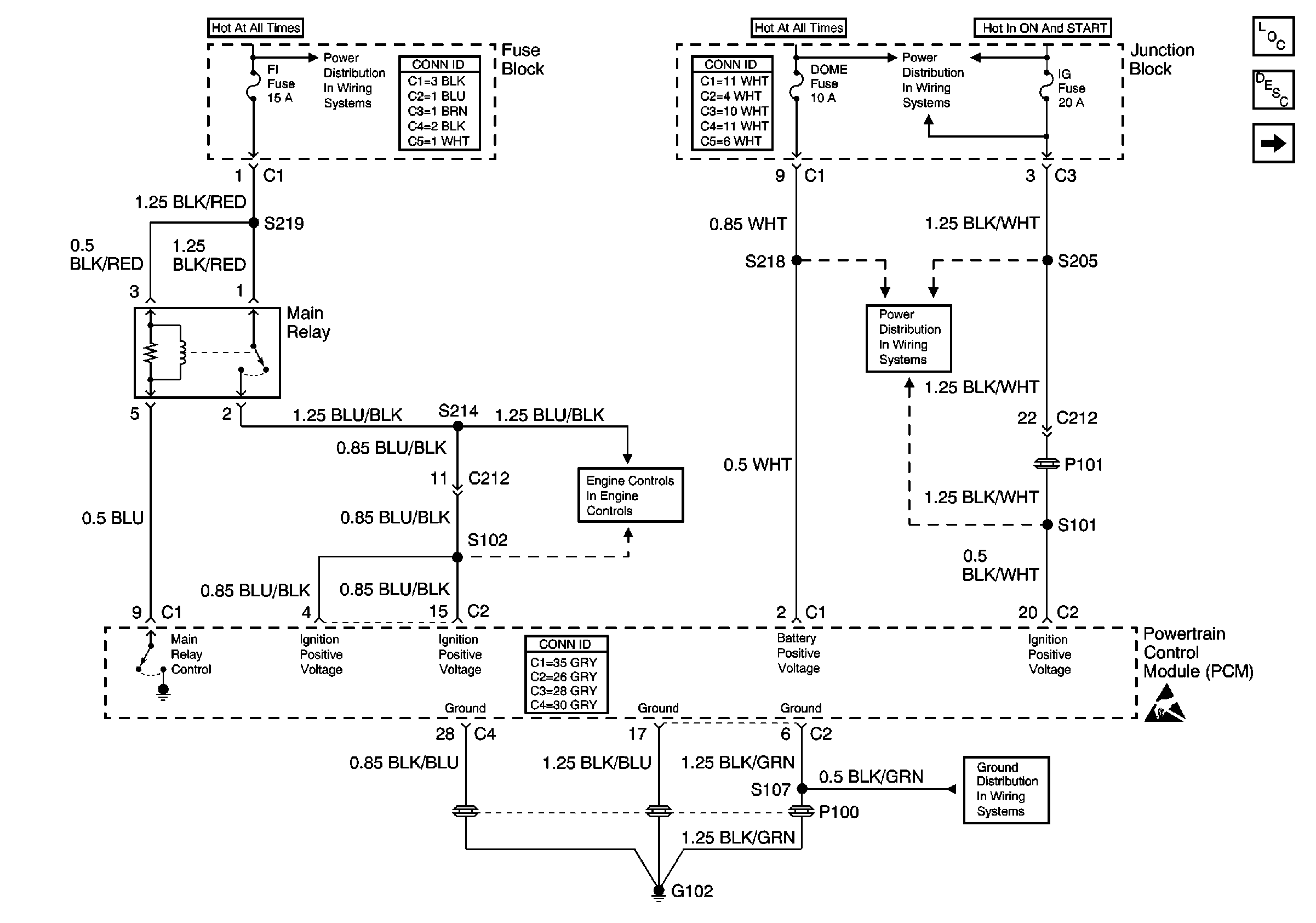Checks
| Action
|
DEFINITION: A steady pulsation or jerking that follows
engine speed, usually more pronounced as the engine load increases. The exhaust
has a steady spitting sound at idle, low speed or on hard acceleration.
|
Preliminary Checks
|
|
Ignition System Checks
| Check for an ignition system misfire:
Important: DO NOT perform this test for more than 2 minutes in order to prevent
damage to the catalytic converter.
- Start the engine.
- Disconnect one fuel injector at a time while observing engine
RPM.
- An equal RPM drop on all cylinders, within 50 RPM, indicates
a common condition that is affecting all cylinders.
- No RPM drop on one or more cylinders indicates a cylinder specific
condition. Check for spark on the suspected cylinders with a J 26792
spark tester or equivalent.
- If there is no spark, refer to
Engine Cranks but Does Not Run
.
- If there is spark, check the spark plugs for any of the following
conditions:
| - | A terminal screw that is bent or loose |
| - | A ceramic insulator that has cracks, carbon tracking or deposits |
| - | A tip insulator that has cracks, carbon tracking, deposits, or
is loose |
| - | A center electrode that is loose |
| - | An incorrect spark plug gap that is too large or too small |
- Check the ignition coil spark plug boots for cracks, carbon tracking,
and moisture.
- If the ignition system components of the suspect cylinder pass
all checks, inspect the cylinder for mechanical or fuel delivery faults.
| • | Run the engine and spray the ignition system with water in order
to check for secondary voltage shorts. |
| • | Check the engine reference signal of the camshaft position (CMP)
sensor with a scan tool. Observe the Engine Speed parameter while operating
the engine at the speed of the concern. The scan tool should indicate steady
and linear RPM readings while running. If the erratic values, such as sudden
spikes or drops in engine speed are displayed, the engine reference signal
is not stable enough for the engine to run properly. Inspect the CMP sensor
signal rotor and housing for worn bushings or drive coupling. Inspect for
electromagnetic interference (EMI) of the reference signal. |
|
Engine Mechanical Checks
|
| • | Check for any of the following engine mechanical problems: |
| - | An incorrect valve lash |
| - | Any broken or weak valve springs |
| - | An incorrect valve timing |
| - | An incorrect or worn camshaft |
| • | Check the intake and exhaust manifold passages for casting flash. |
|
Fuel System Checks
|
| • | Check for a restriction in the fuel supply system. Check for the
correct fuel pressure. Refer to
Fuel System Diagnosis
. |
| • | Check for water contamination of the fuel. |
|
Additional Checks
|
| • | Veriify that the PCM grounds are clean, tight, and in the proper
locations. Refer to
Power and Ground

. |
| • | Check the Service Bulletins for any updates or information. |
|

